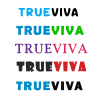How to Handle Rejection in Freelance Bids
Rejection is an inevitable part of freelancing, especially when bidding for projects. For beginners and experienced freelancers alike, handling rejection professionally is critical for long-term success. While losing a bid can be discouraging, it also provides opportunities to learn, improve, and strengthen your approach.
This guide explores practical strategies to cope with rejection, analyze feedback, maintain motivation, and turn setbacks into growth opportunities. Freelancers who manage rejection effectively can build resilience, enhance their reputation, and increase their chances of winning future projects.
Long Description
1. Understanding Rejection in Freelancing
Freelance bidding is highly competitive. Rejection occurs for various reasons:
High Competition: Multiple freelancers may apply for the same project.
Client Preferences: Clients may favor freelancers with specific experience or styles.
Budget Constraints: Pricing may not align with client expectations.
Incomplete Bids: Lack of clarity or missing information can lead to rejection.
Understanding that rejection is not personal helps freelancers maintain perspective and stay motivated.
2. Analyze Your Proposal Critically
After losing a bid, evaluate your submission objectively:
Content Quality: Was your proposal clear, structured, and persuasive?
Relevance: Did it address client needs and requirements?
Presentation: Were your skills, portfolio, and experience highlighted effectively?
Pricing: Was your bid competitive without undervaluing your expertise?
Analyzing your proposals helps identify areas for improvement in future bids.
3. Seek Feedback When Possible
Feedback from clients is invaluable for growth:
Ask Politely: Request constructive feedback after rejection.
Focus on Learning: Accept criticism without defensiveness.
Apply Insights: Adjust future proposals based on feedback.
Even a small piece of advice can help refine your strategy and improve your success rate.
4. Maintain a Positive Mindset
Handling rejection requires emotional resilience:
Separate Self-Worth from Outcome: Rejection does not reflect your skills or value.
Stay Optimistic: Every bid is an opportunity to learn and grow.
Focus on Long-Term Goals: Keep your freelance career vision in mind.
Avoid Overthinking: Move on quickly to the next opportunity.
A positive mindset helps maintain motivation and persistence.
5. Improve Your Freelance Profile
A strong profile reduces the likelihood of rejection:
Highlight Relevant Skills: Emphasize expertise that aligns with project requirements.
Showcase Portfolio: Include case studies, previous work, and measurable results.
Gather Testimonials: Client reviews build trust and credibility.
Update Regularly: Keep your profile current with new skills and achievements.
A well-crafted profile demonstrates competence and professionalism, increasing bid success.
6. Enhance Proposal Writing Skills
High-quality proposals can reduce rejection rates:
Personalize Bids: Address the client by name and reference specific project details.
Be Clear and Concise: Avoid generic responses; focus on value and solutions.
Highlight Outcomes: Show how your work benefits the client.
Include Relevant Samples: Provide examples of similar projects.
Set Realistic Expectations: Specify timelines, deliverables, and pricing.
Effective proposal writing improves your chances of winning projects and builds client confidence.
7. Diversify Your Bidding Strategy
Rejection is easier to handle when you diversify your approach:
Apply to Multiple Projects: Increase chances of acceptance.
Explore Different Platforms: Upwork, Fiverr, Freelancer, or niche marketplaces.
Adjust Project Types: Consider short-term tasks, small projects, or long-term contracts.
Focus on Your Niche: Target projects that match your strengths.
Diversification reduces dependency on a single bid outcome and builds consistent opportunities.
8. Learn from Competitors
Observing successful freelancers can provide insights:
Analyze Winning Proposals: Understand what makes them effective.
Study Pricing Strategies: Find competitive yet fair pricing models.
Observe Presentation Techniques: Note how they structure portfolios and proposals.
Apply Best Practices: Adapt strategies to suit your style and skills.
Learning from competitors turns rejection into a chance to improve and innovate.
9. Build Emotional Resilience
Freelancers must manage the emotional impact of rejection:
Practice Self-Care: Maintain balance between work and personal life.
Celebrate Wins: Recognize even small successes to maintain confidence.
Develop Coping Strategies: Exercise, meditation, or hobbies can reduce stress.
Stay Connected: Network with other freelancers for support and encouragement.
Resilience ensures that rejection does not derail your career or motivation.
10. Stay Persistent and Keep Improving
Consistency is key to overcoming rejection:
Apply Regularly: Frequent bidding increases opportunities to win projects.
Track Progress: Monitor success rates and refine strategies.
Upskill Continuously: Learn new tools, technologies, or methods to stay competitive.
Adapt to Market Needs: Focus on high-demand skills and emerging trends.
Persistence and continuous improvement increase long-term freelance success.
Conclusion
Rejection in freelance bids is an inevitable part of building a career. Rather than seeing it as a setback, freelancers can view it as an opportunity to refine their proposals, enhance their skills, and grow professionally.
By analyzing proposals, seeking feedback, maintaining a positive mindset, improving profiles, and staying persistent, freelancers can handle rejection effectively and increase their chances of securing future projects. Embracing rejection as a learning tool empowers solo professionals to build resilience, confidence, and long-term freelance success.


 by Emily
by Emily




